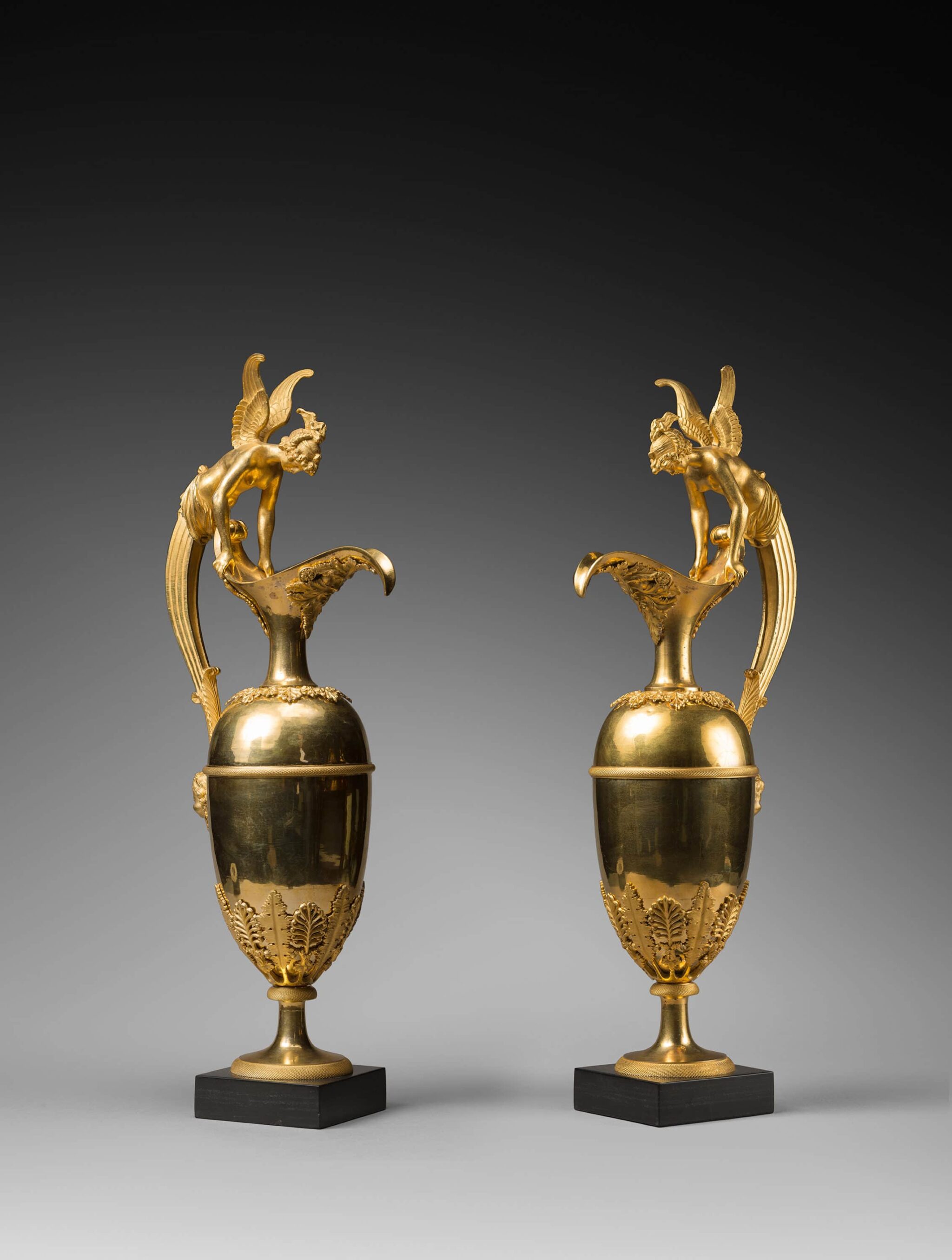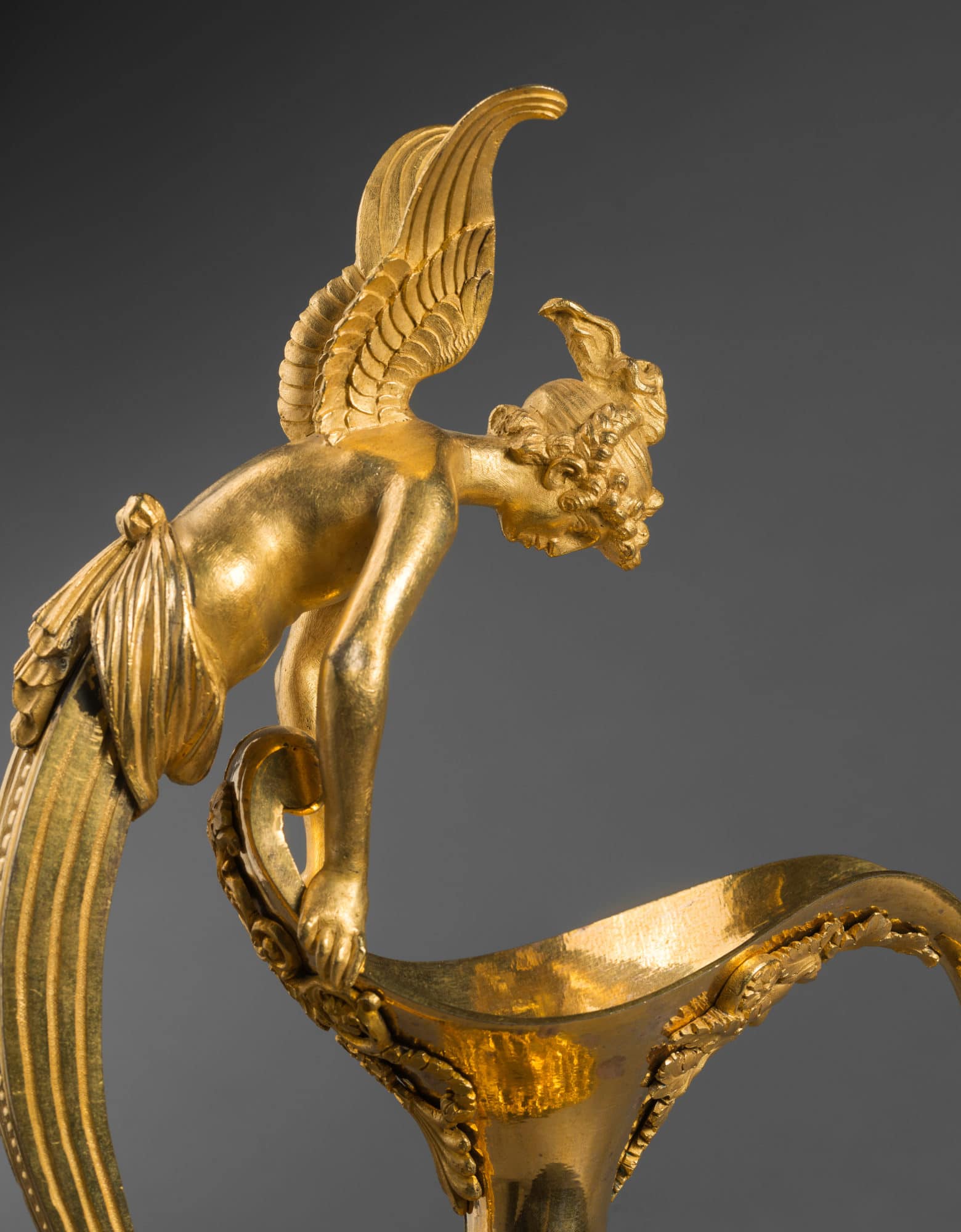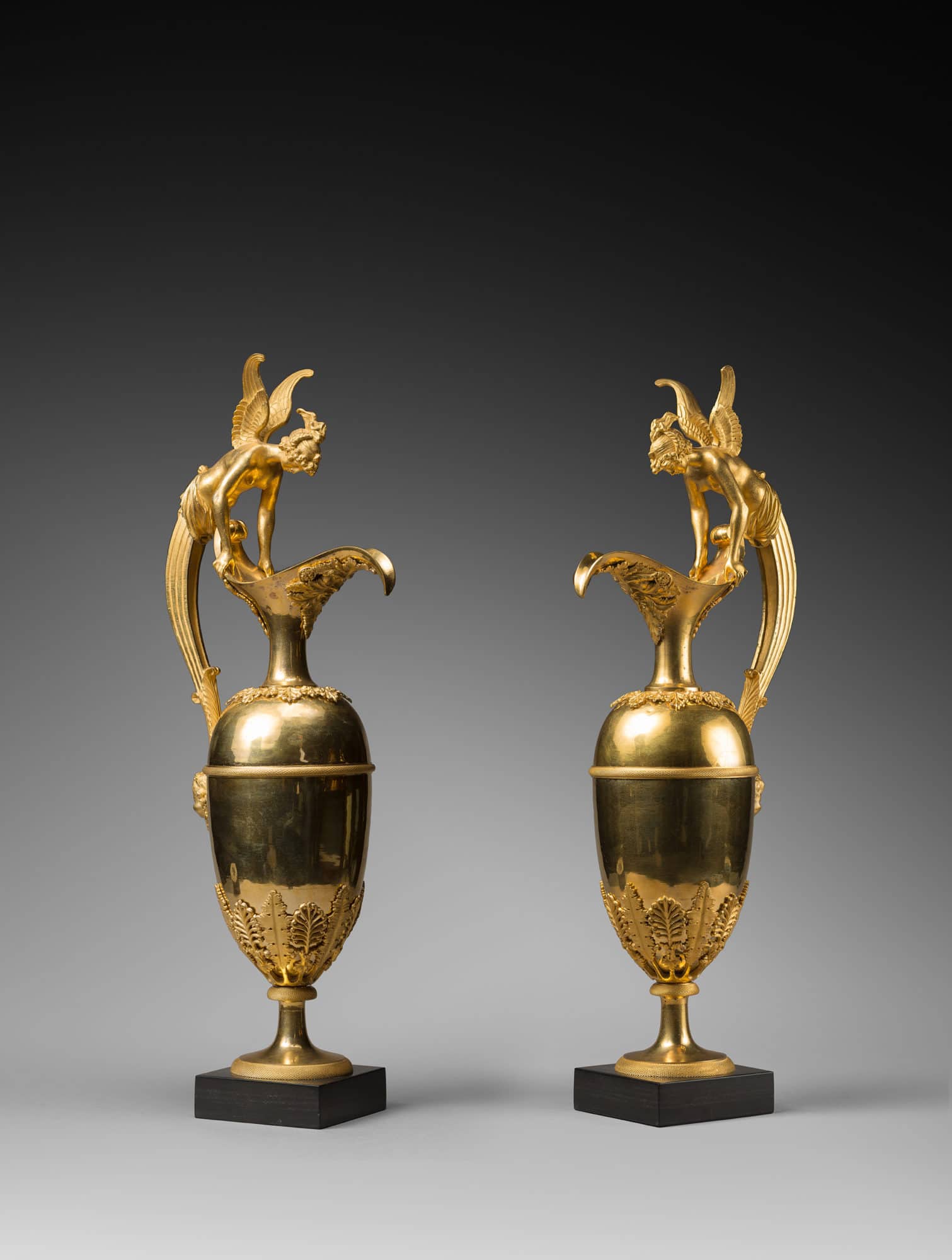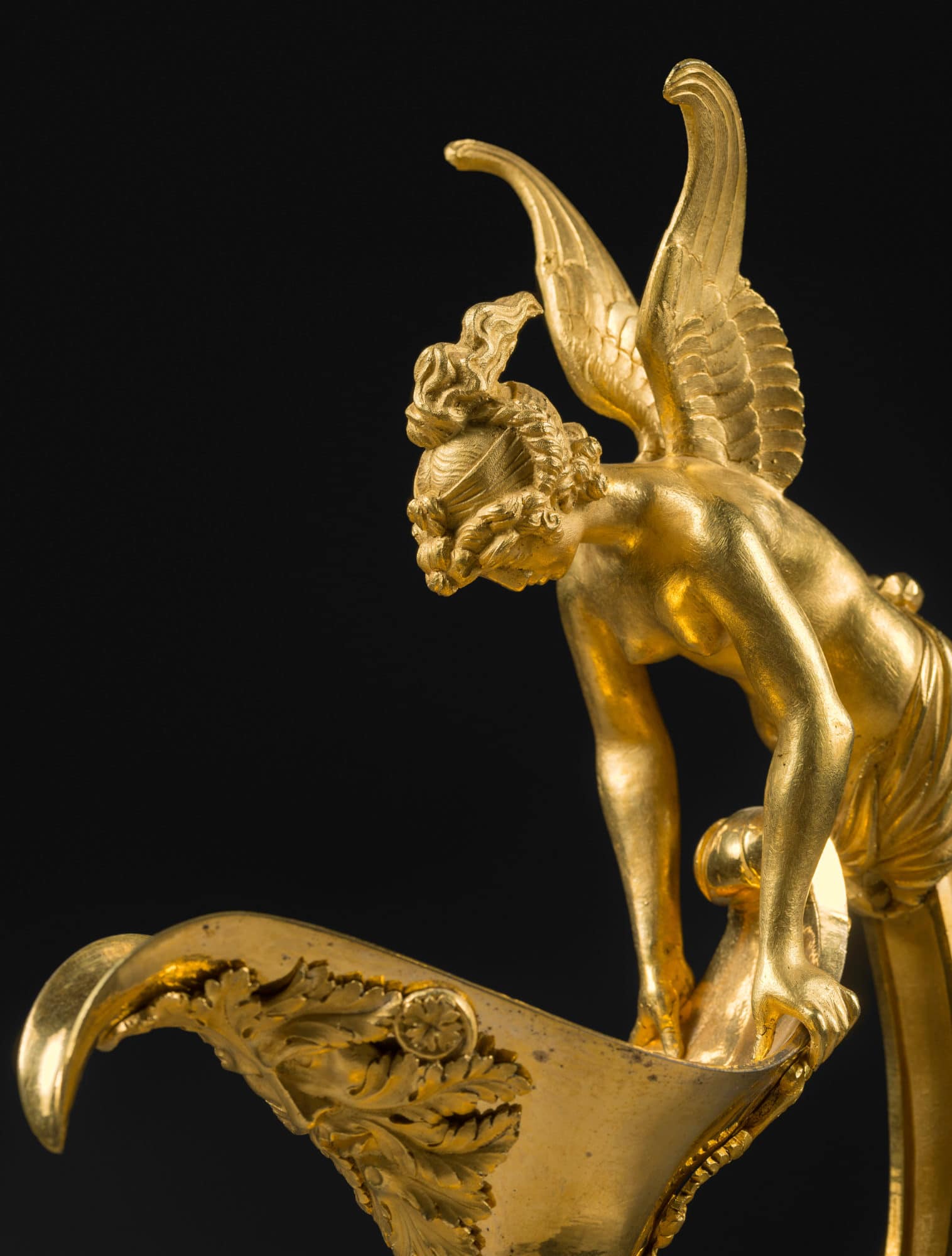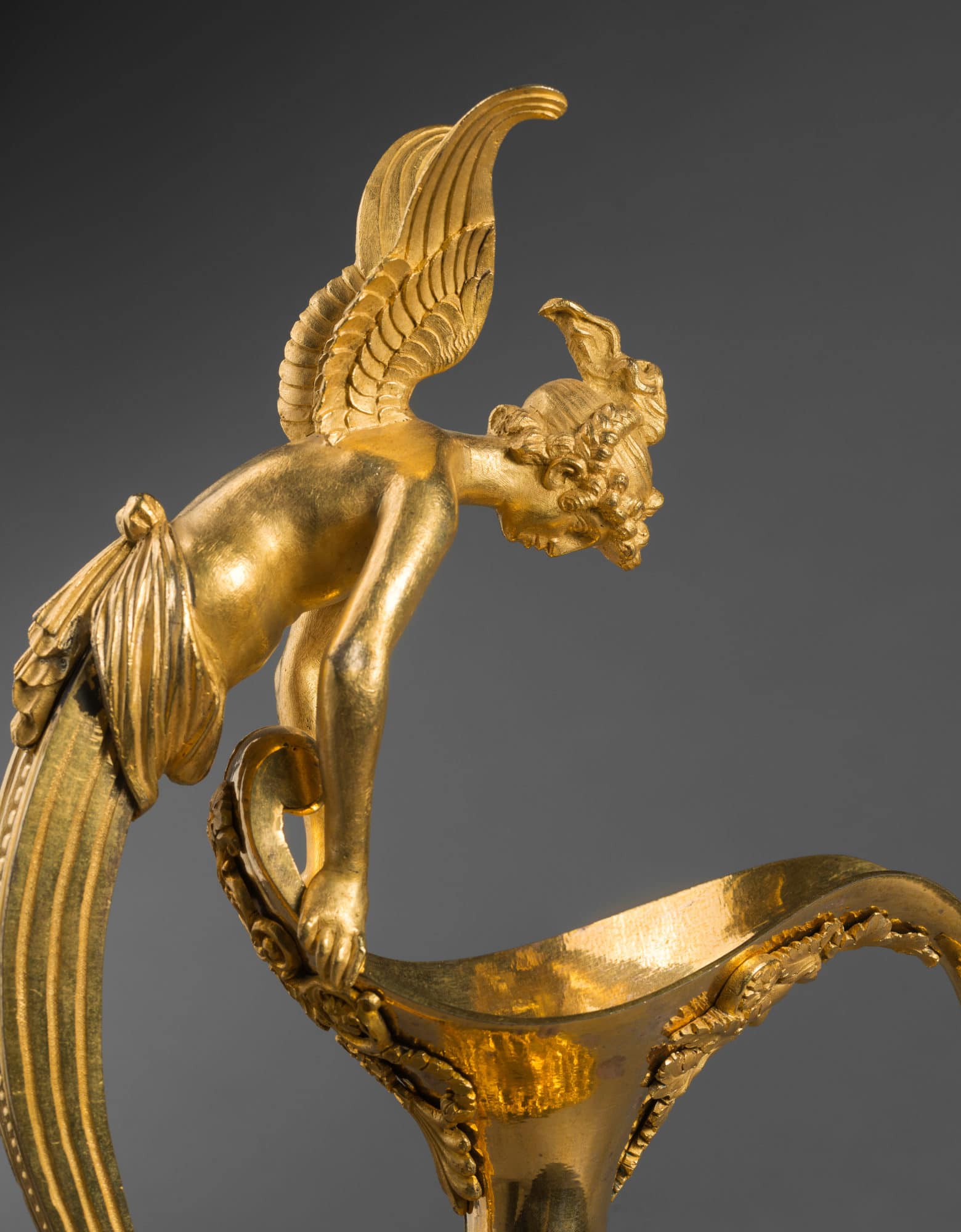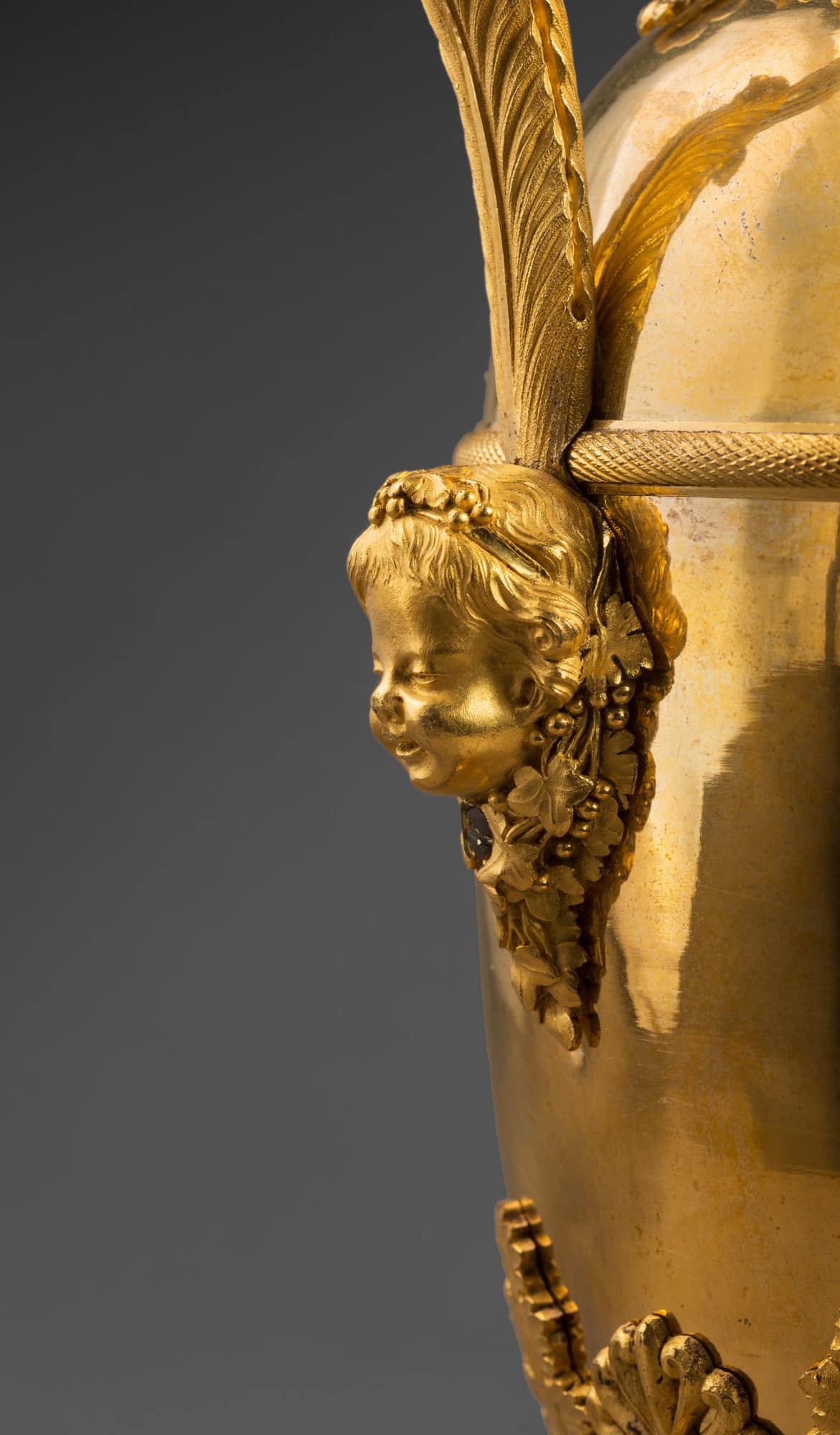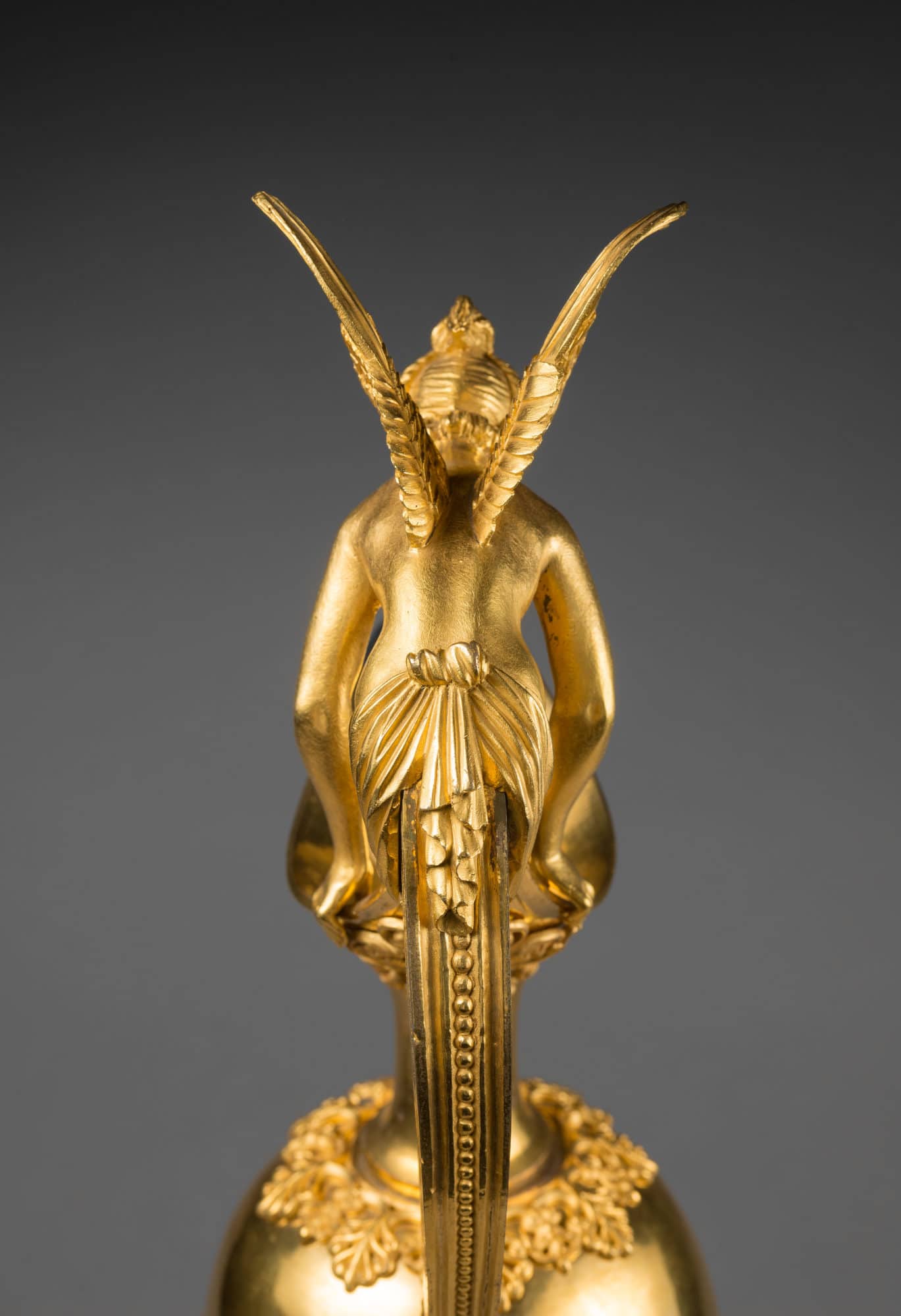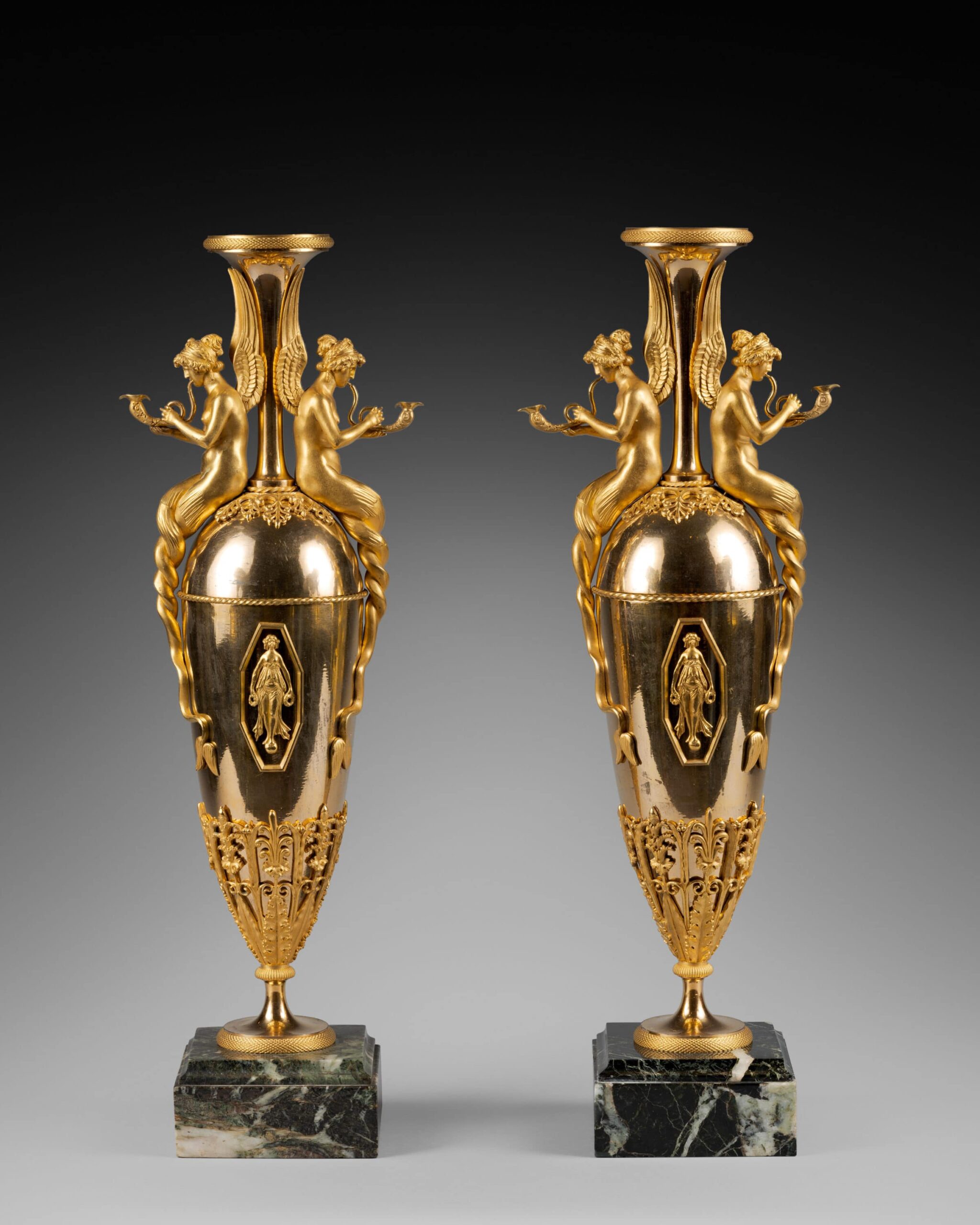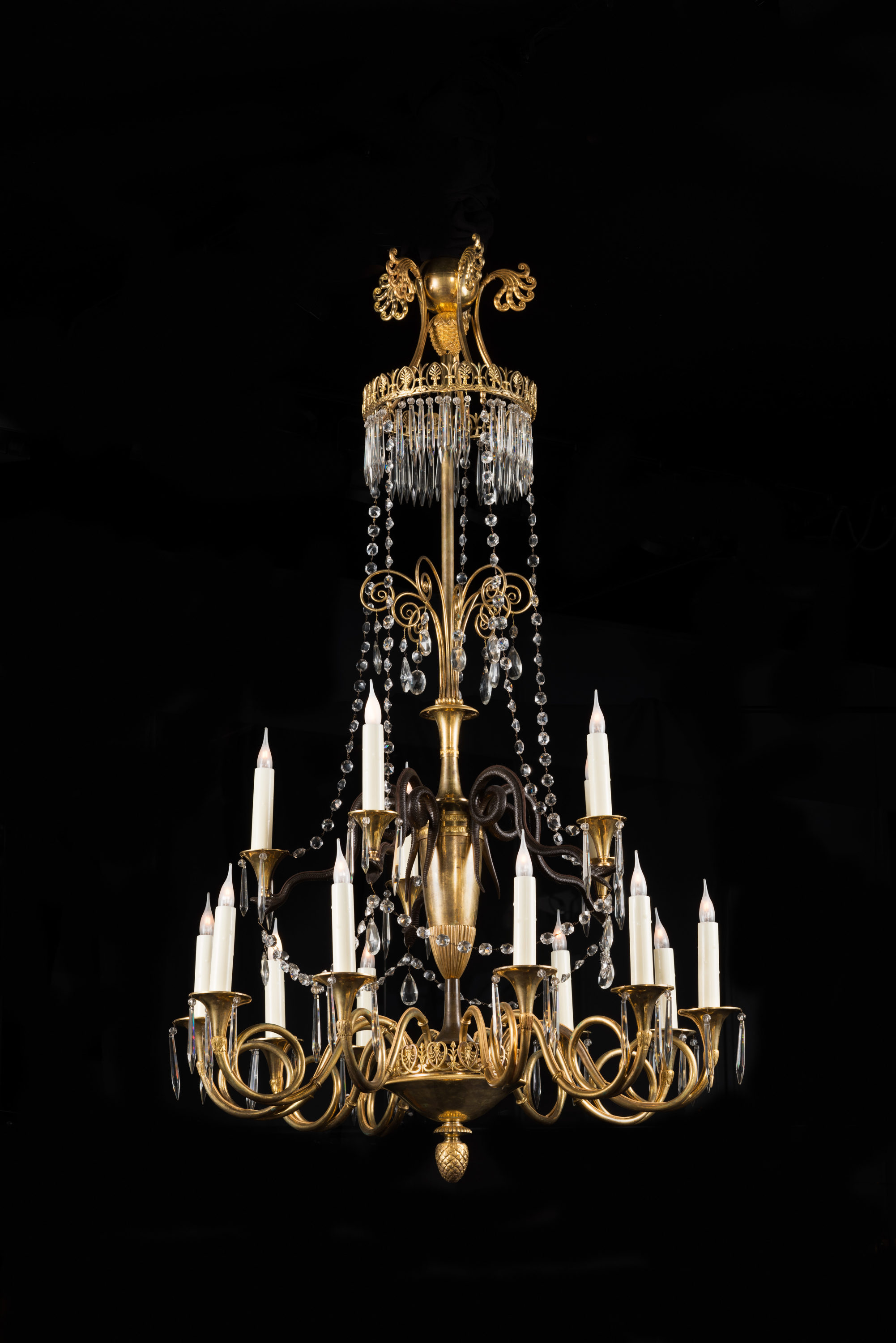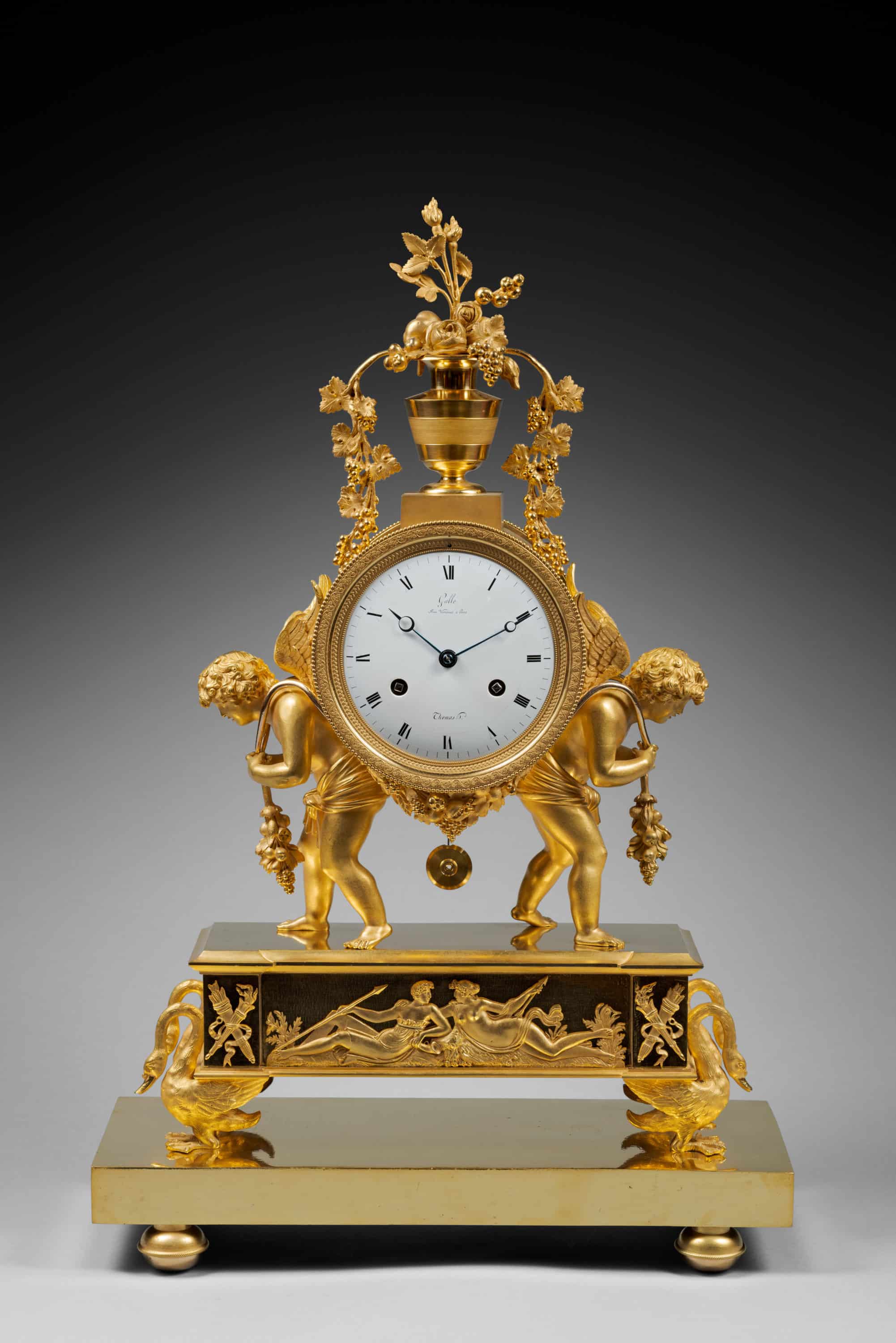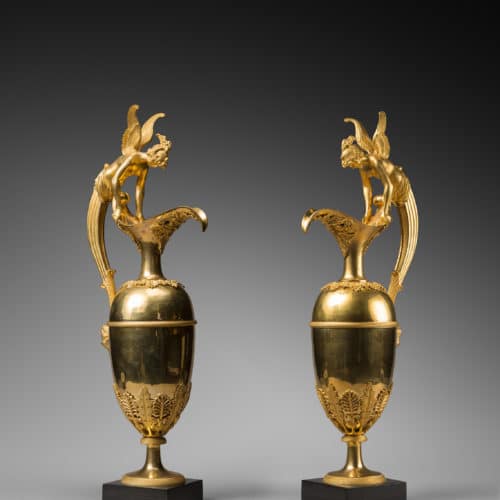Pair of Empire Gilt Bronze Ewers
Of elongated baluster form, the collars and bases of these ewers are mounted with stylized palmettes and acanthus leaves, the spout adorned with an applied male mask whose hair and beard are formed of spreading acanthus leaves, the channelled and scrolled handle terminating by a winged, lightly draped classical maiden who clasps the ewer’s rim with both hands, and supported on a putto mask. The spreading circular foot rests on a black marble base.
Nearly identical ewers are pictured in Paul Marmottan, Le Style Empire, 1925, vol. III, pl. 22. They stand on the mirrored mantlepiece of Empress Josephine’s Petit Boudoir in La Malmaison. Hans Ottomeyer and Peter Pröschel, Vergoldete Bronzen, 1986, p. 364, pl. 5.12.6, illustrate a comparable pair of ewers that make up a garniture with a vase-shaped clock, also attributed to Claude Galle. Arcadi Gaydamak, Russian Empire, Architecture, Decorative and Applied Arts, Interior Decoration 1800-1830, 2000, p. 171, illustrates a similar pair of gilt bronze ewers adorning the mantelpiece in the Blue Sitting Room of the Yusupov Palace in Saint Petersburg. Similar Galle ewers are in the Pavlovsk Palace in Saint Petersburg, the Ostankino Palace in Moscow, and the Württemberg Landesmuseum in Stuttgart. Another pair, formerly in the collection of the Earls of Essex in Cassiobury Park, were almost certainly those offered in the sale of the Ojjeh Collection, Christie’s Monaco, 11-12 December 1999, lot 153.
Claude Galle produced many ewers, urns, vases and clock cases, with handles formed by, or surmounted by, winged maidens as here. A pair of comparable examples is illustrated in Gli Splendori del Bronzo: Mobili e Oggetti d’Arredo tra Francia e Italia 1750-1850, 2002, p. 140, no. 58, as well as in Ottomeyer and Pröschel op. cit. p. 365, pl. 5.12.9. This type of object was very popular among collectors in England and Russia, where they occasionally inspired designers and bronziers such as Andreï Voronikhin (1759-1814) and Friedrich Bergenfeldt (1768-1822).
Claude Galle (1759 - 1815)
One of the foremost bronziers and fondeur-ciseleurs of the late Louis XVI and Empire periods, Claude Galle was born at Villepreux near Versailles. He served his apprenticeship in Paris under the fondeur Pierre Foy, and in 1784 married Foy’s daughter. In 1786 he became a maitre-fondeur. After the death of his father-in-law in 1788, Galle took over his workshop, soon turning it into one the finest, and employing approximately 400 craftsmen. Galle moved to Quai de la Monnaie (later Quai de l’Unité), and then in 1805 to 60 Rue Vivienne.
The Garde-Meuble de la Couronne, under the direction of sculptor Jean Hauré from 1786-88, entrusted him with many commissions. Galle collaborated with many excellent artisans, including Pierre-Philippe Thomire, and furnished the majority of the furnishing bronzes for the Château de Fontainebleau during the Empire. He received many other Imperial commissions, among them light fittings, figural clock cases, and vases for the palaces of Saint-Cloud, the Trianons, the Tuileries, Compiègne, and Rambouillet. He supplied several Italian palaces, such as Monte Cavallo, Rome and Stupinigi near Turin.
In spite of his success, and due in part to his generous and lavish lifestyle, as well as to the failure of certain of his clients (such as the Prince Joseph Bonaparte) to pay what they owed, Galle often found himself in financial difficulty. Galle’s business was continued by his son after his death by his son, Gérard-Jean Galle (1788-1846). Today his work may be found in the world’s most important museums and collections, those mentioned above, as well as the Musée National du Château de Malmaison, the Musée Marmottan in Paris, the Museo de Reloges at Jerez de la Frontera, the Residenz in Munich, and the Victoria and Albert Museum in London.
Discover our entire collection of rare clocks on La Pendulerie Paris.
